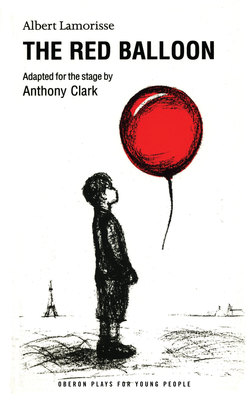Читать книгу The Red Balloon - Anthony Clark - Страница 6
На сайте Литреса книга снята с продажи.
Introduction
ОглавлениеIn, 1953 Albert Emanuel Lamorisse, director, scenarist, cinematographer and producer began work on his fourth short film Le Ballon Rouge. A perfectionist, it is reported that he wrote forty-two versions of the script before he was satisfied with it. The film tells the story of Pascal, a lonely child who is bored at home, and ignored by his classmates, until he makes friends with a large red balloon. The film has no words, and stars Albert’s five-year-old son. The film was shot in Eastman colour, but printed on Technicolor stock, which gives it its Utrillo-like-ethereal aura. It was released in 1956, and was an immediate success with audiences and critics. Jean Cocteau called it, ‘a fairy tale without fairies’, and a British reviewer wrote that ‘it lends stature to the cinema as a whole.’ It won many prizes including Medialle d’Or du Grand Prix du Cinema Français, and the Palme d’Or at the Cannes Film Festival. It has become a classic.
In 1957 Albert Lamorisse published the story in written form accompanied by the stills from the film.
In 1989 I adapted the story from book and film for the stage, with a brief to stick closely to the spirit of the original. I chose a musical form because the story is simple and resonant, emotionally. Mark Vibrans, with whom I have collaborated on numerous occasions, wrote the score. The text and score have been developed over four productions: first at Contact Theatre (1989), then at the Bristol Old Vic (1990), Birmingham Repertory Theatre (1995) and finally at the Royal National Theatre (1996). I would like to thank the casts, the designers Kendra Ullyart and Ruari Murchison, and the three choreographers, Lorelei Lynne, David Massingham and Malcolm Shields, for their contribution to this adaptation.
The Balloon: I don’t know how they did the balloon in the film, and there may be more ingenious ways of realising it than mine. This is how I did it: I got a large, strong, red, round, helium-filled balloon; attached a lightweight stiff cord (dressing-gown cord) to its nozzle, sellotaped one end of a couple of metres (the armspan of the operator/puppeteer) of invisible thread (fishing line) 20cm from the nozzle, passed the other end of the line through a hole at the end of a thin, strong wooden rod, just under a metre in length, and tied it to the end of another rod of similar length. The operator/puppeteer held the rod in his/her hands. By placing the rod with the hole wherever the operator/puppeteer wanted the balloon to go, and pulling or releasing the tension on the line with the other rod, it was possible to control the balloon’s movements and give the illusion of independent flight.
At one point in the text the balloon is required to write on a blackboard. This was done by attaching a small piece of chalk to the rod with the hole at the end. This rod was placed right under the nozzle of the balloon by pulling the line away with the other rod. Thus it was possible to mask the chalk. At the end of the story the balloon should ‘die’ very slowly. After losing lots of balloons, we discovered the best way to do this: after the ‘pack of children’ had all fired their catapults at the balloon, they would rush Pascal who was holding the balloon, triumphantly, and mask him while he cut a very small hole near the nozzle of the balloon with a small pair of nail scissors. They then broke away from Pascal as he released the balloon, and watched it deflate. The effect is moving, and capable of creating an extraordinarily tangible silence in the theatre.
The Revolt of the Balloons, in the closing minutes of the musical, was done equally simply. Fishing lines were attached to various points on the set and stretched to hidden points in the auditorium. Balloons with weighted strings (large curtain rings did the trick) were then set down the lines and collected by the cast. The strings were pulled through the curtain rings by the cast and handed to Pascal. Where flying was available flying wires were attached to Pascal while he was surrounded by hundreds of floating balloons and he then took off, to spontaneous applause.
The Company: This musical can be performed by as few as eleven actor-singers or as many as you like. I saw it produced in Holland in 1998 with fifty children and two adults, to great effect.
Antony Clark, 1999
A version of this script of The Red Balloon was first performed at the Contact Theatre, Manchester, in December 1989, with the following cast:
Louise Yates, Amelia Bulmore, Jane Cox, Philip Rham,
Claude Close, Kieran Cunningham, Andy Crooks,
Rachel Spry, Chris Garner, Jane Lancaster and
Philip Aldridge.
The Royal National Theatre cast included:
Nicky Adams, Malcolm Shields, Jane Howie,
David Rubin, Rashan Stone, Lucy Dixon, Nigel Betts,
Naomi Radcliffe, Daniel Crowder, Joanna John,
Natascha Bain, Graeme Henderson, Katherine Oliver,
Rachel Spry and Simeon Truby.
